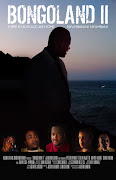
Mwandishi Jules Damji
Kusoma blogu yake bofya hapa: http://oysterbay-stories.blogspot.com/
Hivi karibuni nimegundua kitabu cha 'Oyster Bay Stories' kilichoandikwa na bwana Jules Damji. Yeye ni mhindi aliyezaliwa Tanzania na kuishi huko kwa muda mrefu kabla ya kuja hapa Marekani.
Kama tunavyojua kuna wahindi wengi Tanzania and Afrika kwa ujumla. Nao wana historia yao ndefu na makabila na dini tofauti, mfano kuna wahindi wakristo, waislamu (mfano mabohora) na wahindu.
Kitabu cha bwana Damji ina hadithi fupi mbalimbali kuhusu maisha ya Tanzania na hasa Dar es Salaam miaka ya 1960's na 1970's.
Kwa habari zaidi kuhusu kitabu cha 'Oyster Bay Stories' mnaweza kusoma:
http://oysterbay-stories.blogspot.com/
**********************************************************************
Excerpt from the Book:
Caretaker
In the way that elegant minarets, manicured lawns, and lush gardens with sparkling water fountains are inherently part of a Grand Mosque, Mr. Karmali was a human one. He was our jamat bhai, or caretaker, of the Upanga Mosque at the end of several rows of two-story cream-white identical flats along the bending Upanga Road.
It is a modern two-story white building, with arched glass windows along the length of each floor, and a prominent tower at one end of the building, housing four circular clocks on each of its face and a dome on top of it. It looks grand and ostentatiously conspicuous, more like a palace than a house of worship. Perhaps all houses of worship are deliberately built on a grander scale to inspire awe among its worshipers — and envy among those not of the denomination.
Even in Europe, ancient cathedrals were built on enormous scale. So were the temples of ancient India, followed by Muslim conquers who built their grand mosques, some on razed temple grounds.
On festive occasions, our Upanga Mosque would be festooned with glittering colored lights along the edges of the building, outlining its frame at night. Many postcards captured this luminous moment — and were on sale at many of the local bookstores in town. It was a landmark of its kind and a source of architectural pride for our community, not only the Upanga Mosque, but others as well, in downtown, in Kariakoo, in other coastal and interior towns. These landscape monuments spoke of the community’s powerful presence — and for many a source of envy.
Every morning and evening before prayers, Mr. Karmali would be seated in his rickety wooden chair by the main entrance doors of the mosque facing Upanga Road. His appearance and attire, like the unchanging engraved Arabic designs on the entrance doors, remained unaltered: a white flowing kanzu, concealing his large body, a brown tweed jacket adorned with old bronze medals with ribbons, and a tilted red fez on his oversized head, its black tassel, like a pendulum, brushed his unshaven jovial face as he greeted people entering the prayer hall.
He rarely spoke, and when he did, it was only to delegate mosque-related chores in Kiswahili to youngsters; his kutchi or gujarati was heavily accented, with African pronunciations, and was often ridiculed by the affluent kids who attended Friday prayers in their best designer clothes........







No comments:
Post a Comment